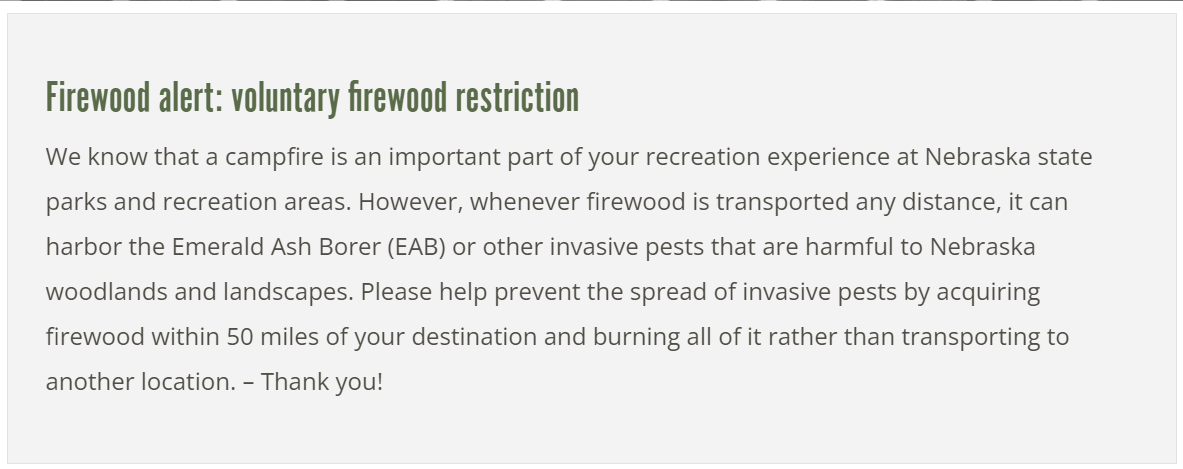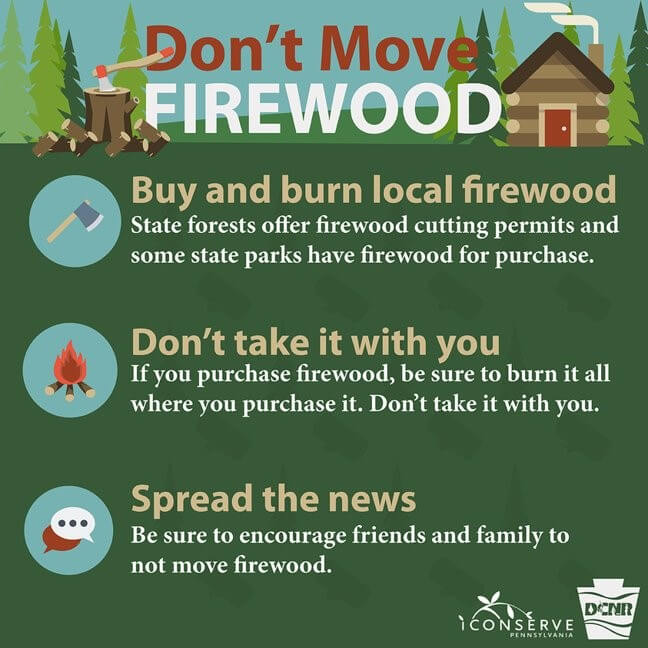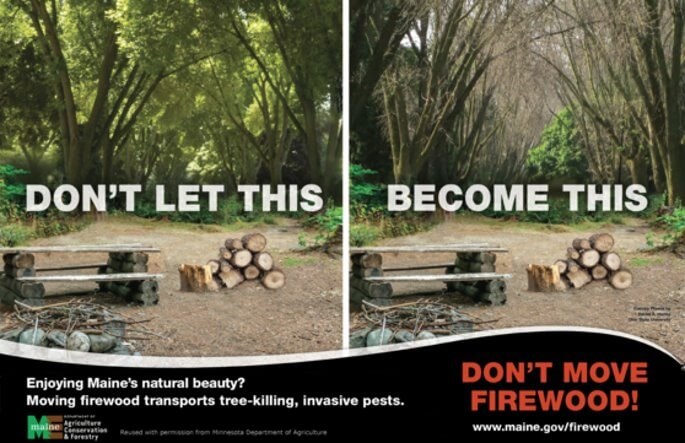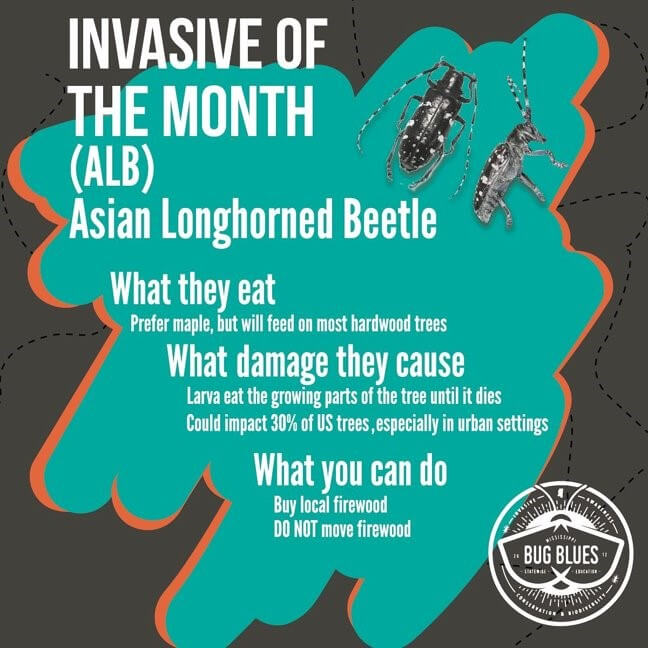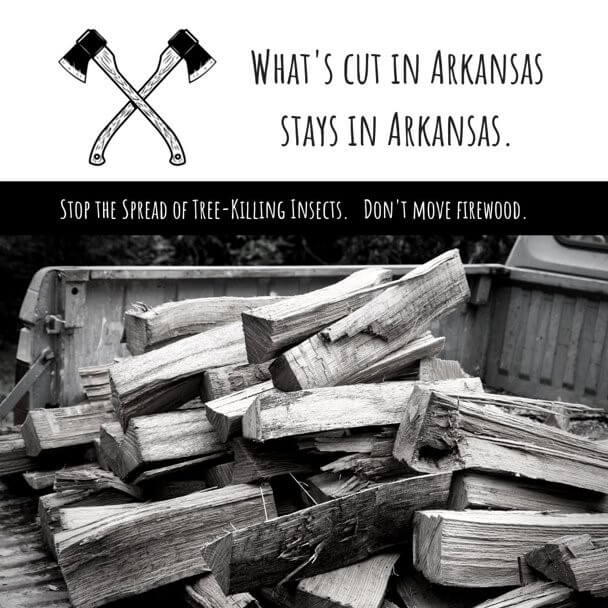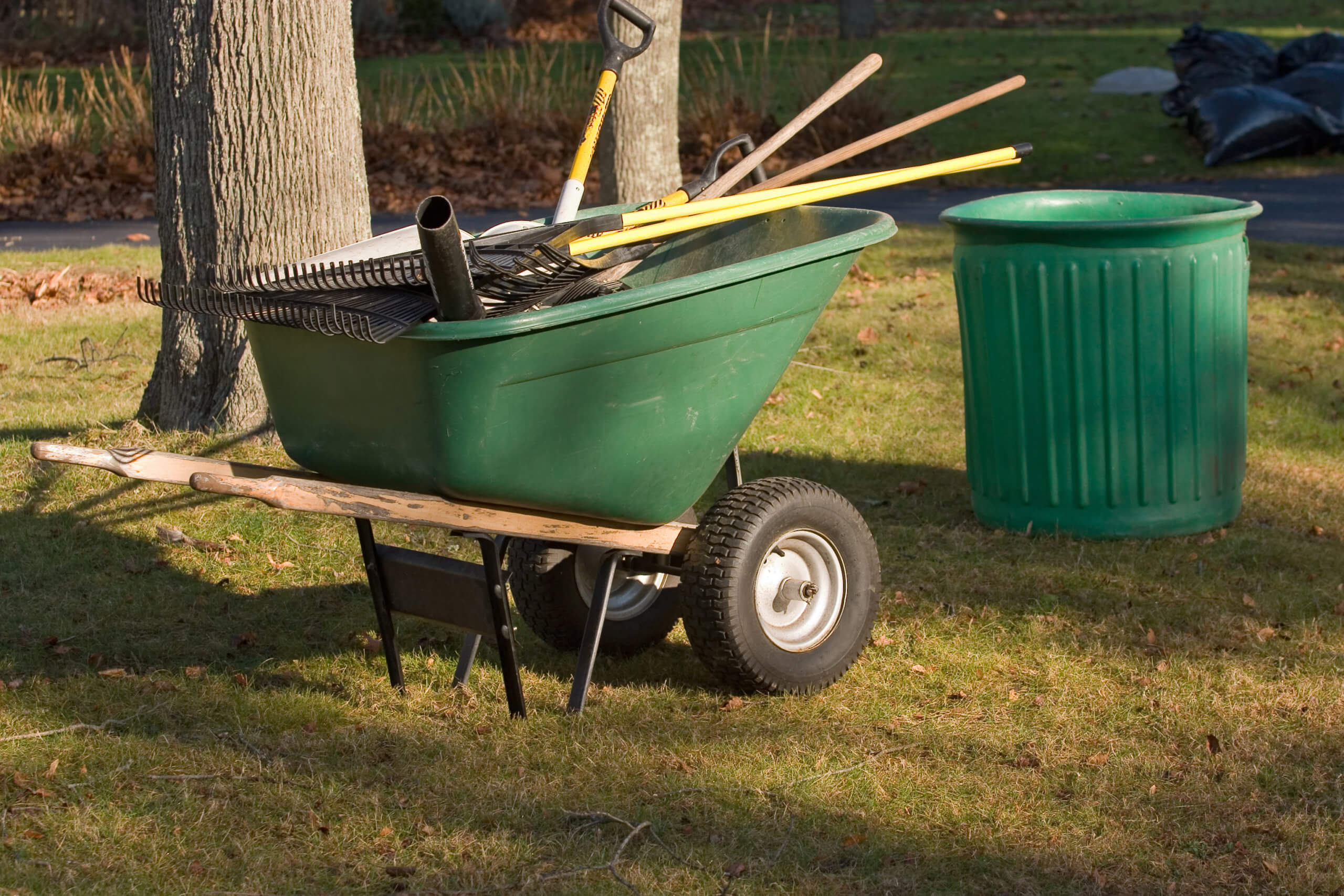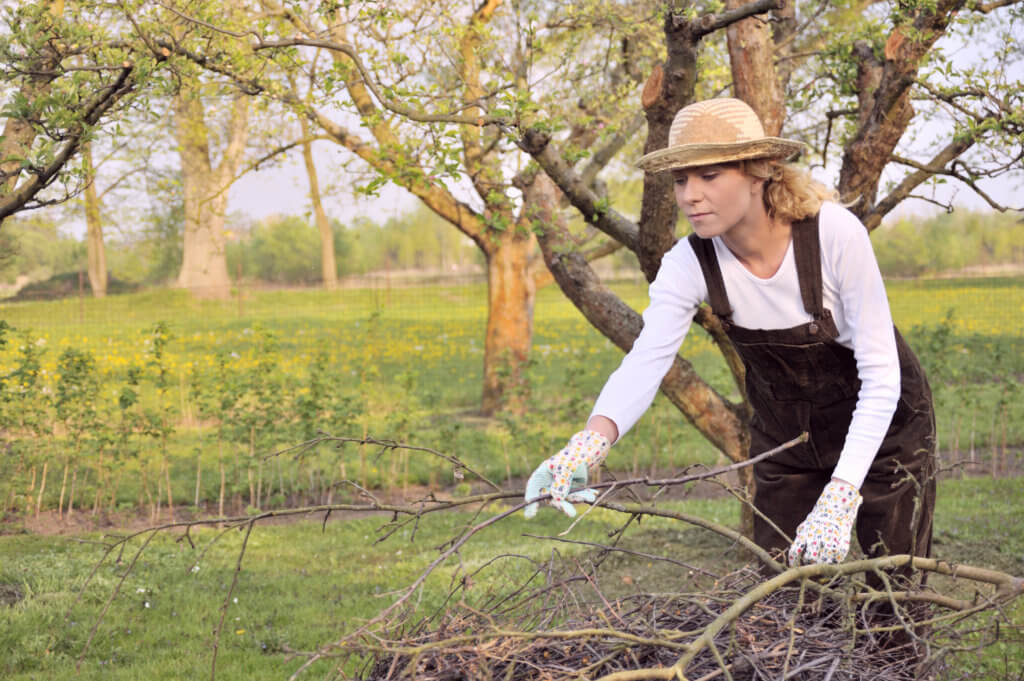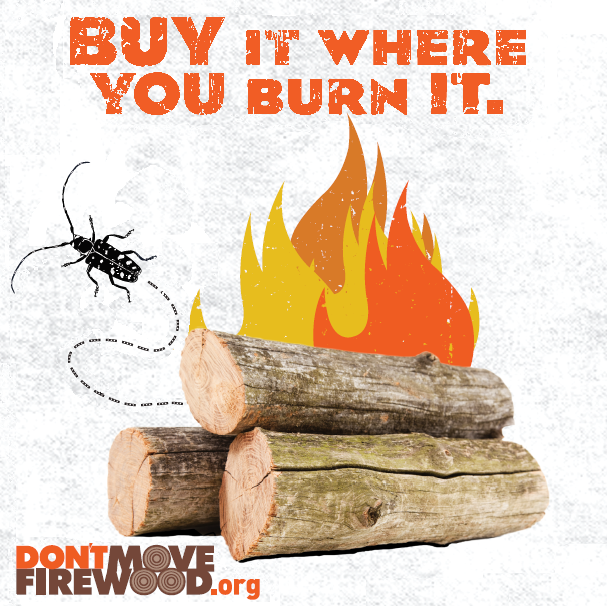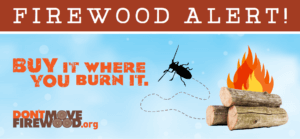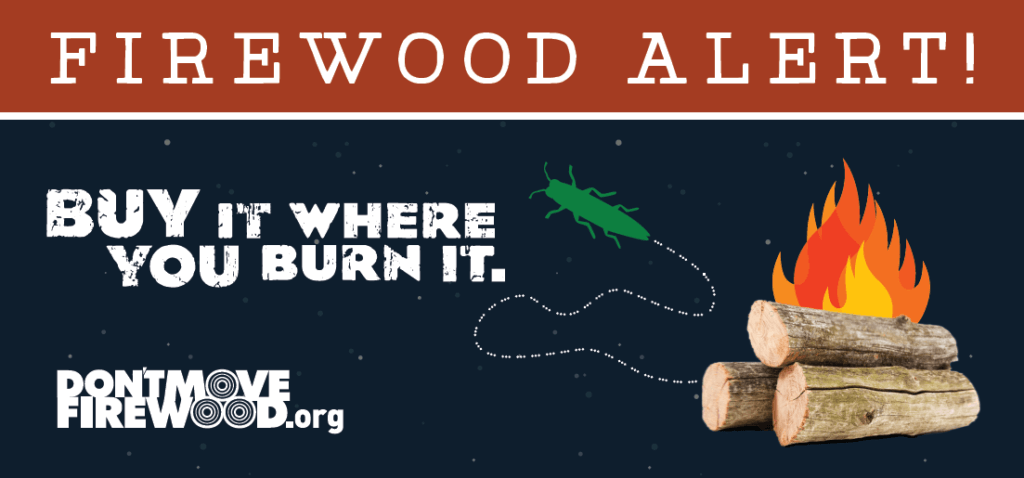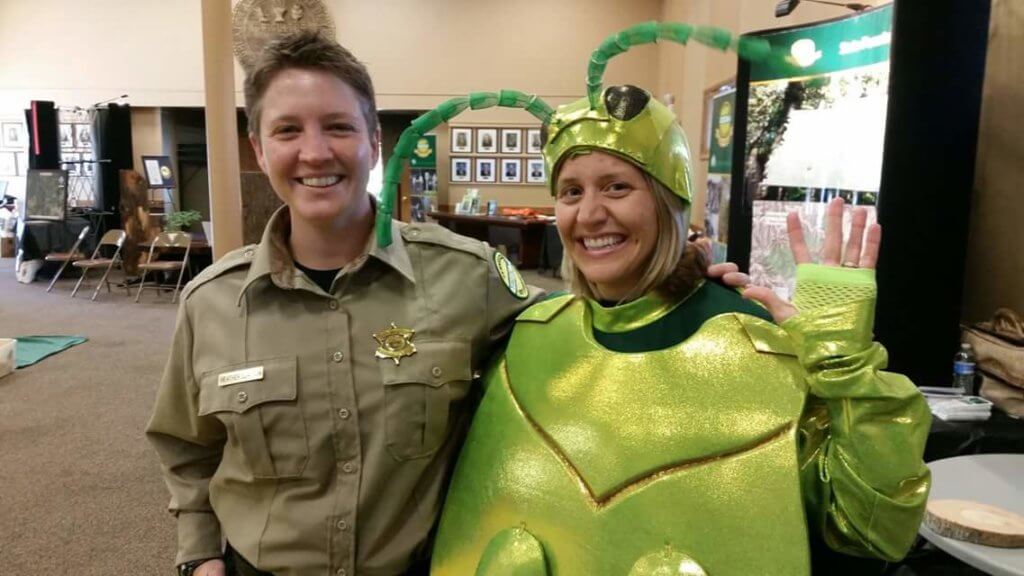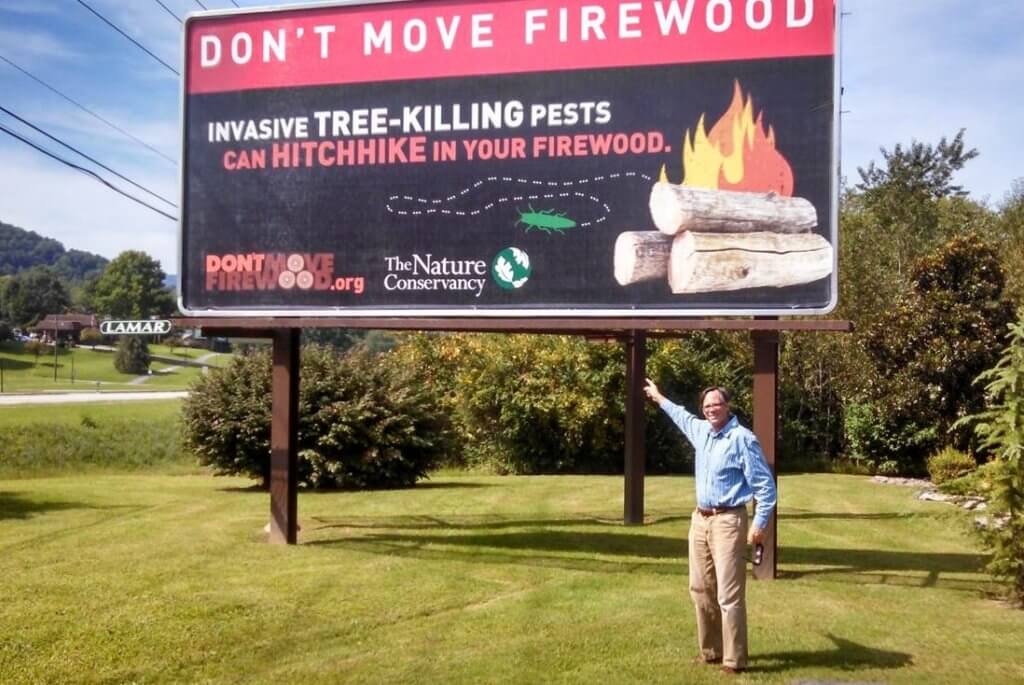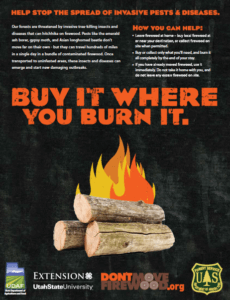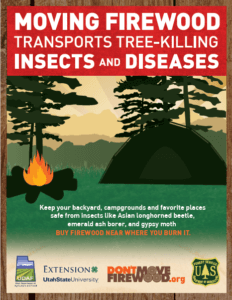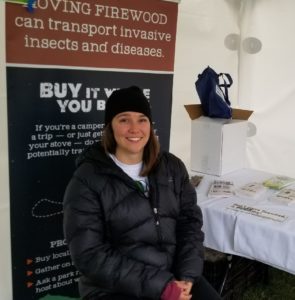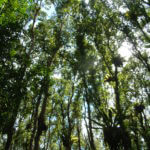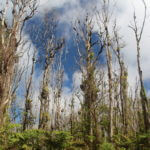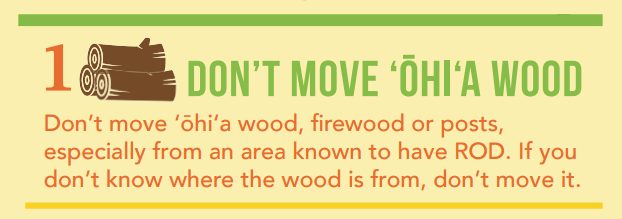We want to recognize the excellent efforts shown by the following states- each of which provide great examples of consistency and thoroughness in their outreach on firewood and forest health!
An online outreach environment integrated across different state agencies and jurisdictions greatly increases the chance visitors will encounter important information on invasive species as they relate to forest health and the firewood pathway. This year we undertook the meticulous task of hunting through the internet in search of firewood outreach for every US state and territory across the following four key metrics: 1) state agency (non-parks) site, 2) cooperative extension site, 3) state lands/parks management site, and 4) recommendations found during the booking process for reserving a state parks campsite.
Out of the 50 US states and 5 territories, we’ve chosen some of the best online outreach examples among four states to highlight their excellent online firewood outreach. Easily accessible information as well as repetition and consistency work together to drive the message home that responsible firewood choices make a difference. Everyone has a part to play in the conservation of our natural resources! Below you’ll find some of the best firewood-focused pages as well as comments from some of the people hard at work in these states to spread the word on firewood and forest health.
Michigan
Check out the centralized page that Michigan Department of Agriculture and Rural Development has on firewood outreach: Firewood Facts: Buy It Where You Burn It . Several related pages were found that really lay out the rules and best practices for firewood use in the state including: Firewood Local Rules and Laws, Firewood Education and Outreach: Spread of Invasives, and Firewood Certification and Standards. These pages provide easy to read information in multiple locations, increasing the chance that the messages reach their intended audience.
“Michigan has a strong commitment to healthy forests and urban landscapes, and we’ve experienced the devastating impacts of invasive species on these important resources,” said Joanne Foreman, Michigan Department of Natural Resources invasive species communications coordinator. “Early adoption of the “Don’t Move Firewood” campaign, state support for an interagency invasive species program and collaboration with Michigan State University Extension assures coordination of our firewood outreach and policy efforts.”
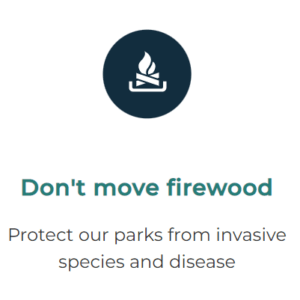
South Carolina
South Carolina Forestry Commission has an informative centralized Forest Health: Don’t Move Firewood page promoting responsible firewood use and best practices, as well as clearly written resources on Clemson’s Department of Plant Industry regulatory services page, Firewood Movement. Together, these two pages reinforce South Carolina’s firewood messages.
“We believe that addressing forest pest issues, like the movement of infested firewood, is best achieved through education that happens early and often- and we are fortunate in South Carolina to have so many other agencies and organizations proactively communicating with the public” says Haley Ritger of Clemson University’s Department of Plant Industry. “These collaborative efforts mean that people who live, work, or recreate around South Carolina forests are consistently learning how they can protect our natural resources from forest pests.”

Indiana
Indiana Department of Natural Resources has a centralized Firewood Rules page with clear and concise information on the firewood allowed on state lands. Links to this resource were found with complimentary imagery throughout related agency sites and pages, which increases the chance that visitors will find this resource without actively searching for it.
“Outreach is something we really concentrate on here in the Indiana DNR.” says Megan Abraham, the State Plant Regulatory Official in Indiana. “We have really great partners, including- our DNR staff (Parks and Forestry), agricultural extension in each of our 92 counties, our Purdue University Partners assisting us with Forest Pest Outreach and webinars like EAB University, and most importantly our landholders and members of the general public- and they are what makes us successful in discovering and managing the invasive species that Indiana has found within its borders.”
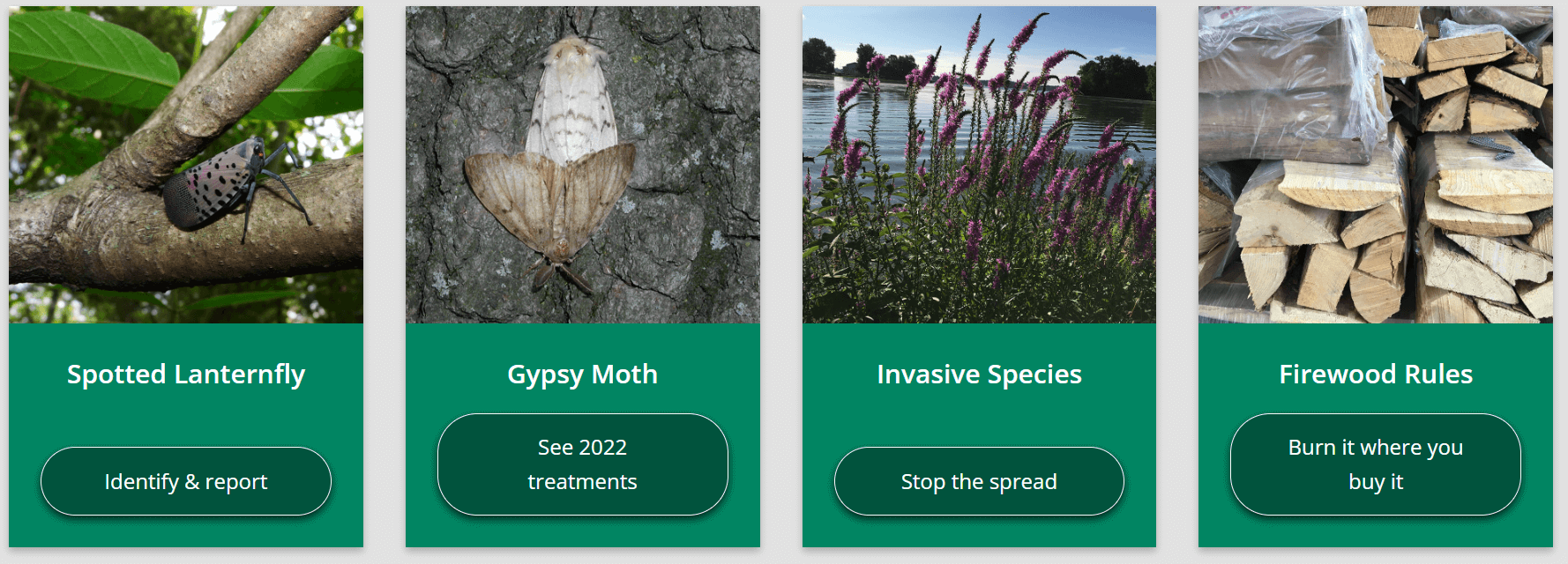
Nebraska
Check out Nebraska’s Invasive Species Program page: Don’t Move Firewood! for some great ideas on how to highlight the firewood pathway. This is an excellent example of an invasive species program affiliated with a state university that gives firewood the attention it needs with clear firewood guidelines and plenty of resources for visitors to learn more. This page even has a DMF video!
